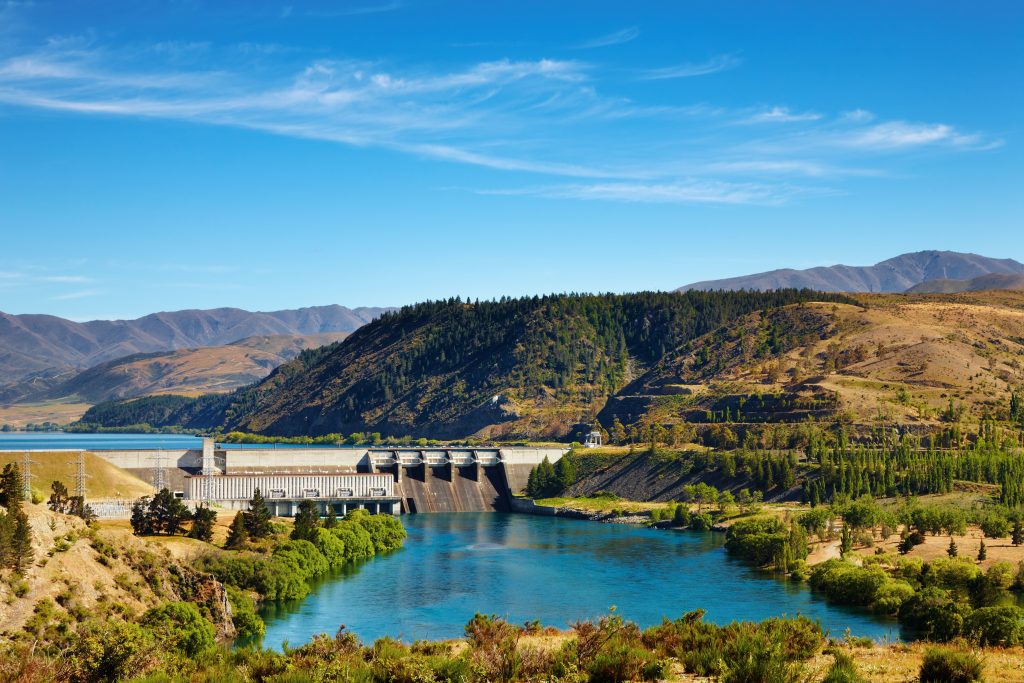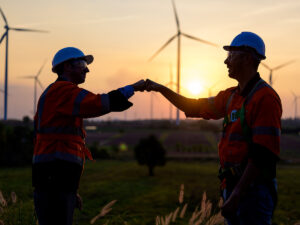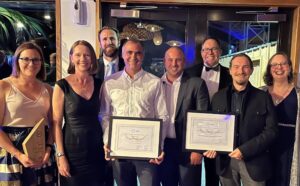Fortune favours the bold is an obvious and timeless truth. As we enter 2025, sustainability remains at the forefront of global and local agendas. But with intersecting crises, political shifts, and evolving regulations, the path forward demands bold, strategic thinking based on good evidence and solid science.
Tonkin + Taylor has some insights into our sustainability predictions in 2025. We see seven themes shaping the sustainability landscape this year, that will both challenge and inspire organisations to be decisive and act.
The Politics of Progress – making the business case work
In New Zealand, austerity politics and a struggling economy mean sustainability goals need to stand on solid business cases. The mantra for 2025? Win-win-win outcomes—where environmental, social, and economic benefits align. That’s not necessarily a bad thing because, as with all investments, sustainability initiatives should provide an adequate return. Showing those benefits is often more about acceptable timeframes for returns and the fact that traditional financial accounting has a rather myopic approach that doesn’t capture wider gains. Executives and senior managers more adept at identifying sustainable solutions across systems will thrive in ’25.
And while domestic pressures mount, the global stage faces its own shakeup: policies of new Trump administration in the U.S., companies may feel emboldened to hit pause on their climate ambitions, DEIB and broader sustainability initiatives. The counterweight? Businesses that value access to global markets and talented young employees know sustainability performance is non-negotiable. Prioritising the right issues and initiatives to make progress with payback will be critical.

Meanwhile, New Zealand’s government faces growing scrutiny over how it plans to meet its Paris Agreement NDC1 obligations; and is due to submit its 2nd NDC commitment by February 2025. The Climate Change Commission has highlighted substantial opportunities for emissions reductions and the pressure is on for faster, more ambitious action. 2025 will reveal whether the government has a vision for economic development that positions Aotearoa to thrive in a low emissions future. We remain ready to throw our expertise and experience behind that worthy cause.
Local Government Under Strain – pragmatic and adaptable solutions needed
Councils across New Zealand are grappling with tight budgets, mounting infrastructure expenses and growing expectations for more proactive protection against climate change risks. Those that have experienced major climate events or lagged on planning may step up, but many will struggle to prioritise resilience investments. Additionally, the Office of the Auditor-General’s increased scrutiny on climate strategies will only amplify the need for decisive, transparent action.
At the local level, we also expect to see continued pressure on Electricity Distribution Businesses (EDBs a.k.a. local lines companies). Smaller EDBs in particular, serving some of the more remote areas in Aotearoa, are being required to continually maintain and upgrade infrastructure to cope with growing demand for electricity and the need to improve resilience against sever weather risks. For community-owned EDBs, the pressure to pay a dividend to top up council coffers will force difficult decisions and, as a regulated sector, finding the funds for resilience investments will pose ongoing challenges.
We see a significant need for increasing support to councils and other local infrastructure bodies to navigate these challenges with pragmatic and affordable solutions that help determine the right priorities. Pathways forward will necessarily need to enable flexibility and provide adaptive options to cope with uncertainty.
The Regulation Tightrope – choosing between compliance or transition?
The second year of mandatory climate-related disclosures will test the mettle of many businesses. Do they aim for basic compliance or embrace an opportunity to challenge their business models and show the route towards long-term value creation? We see businesses looking for financially efficient compliance solutions that enable resources to be targeted towards meaningful action. In short, we see this compliance obligation as big opportunity that can achieve both compliance and more strategic commercial objectives.
For businesses starting their climate transition journey, building the foundations for a clear and structured plan should be a priority. Knowing, and communicating, the desired destination and level of ambition is critical. Strategic options and pathways towards those goals will then define the right targets to address financially quantified climate risks, whilst progressing the business towards sound commercial objectives. The opportunity is to evolve business models to be future-fit and future-proofed, rather than allowing compliance to drive investments. To support this, we anticipate more interest in plausible sector scenarios that will provide valuable context for businesses to collaborate and learn together.
2025 is the year for further upskilling executives and leadership teams to see the tangible benefits from the disclosure regime. Businesses will move from scenario analysis to scenario testing that supports transition planning. Making well-informed decisions that meet compliance needs and deliver business benefits will be increasingly scrutinised by investors, customers and other stakeholders. Businesses will also need to mindful of potential changes to the regulatory regime and should expect closer alignment with the Australian approach if changes are made.
Adapting to Climate Events – grasping the nettle of uncertainty
As climate events grow in frequency and intensity, the financial implications are becoming more tangible. Insurance costs will likely continue rising, with some regions already experiencing premium hikes or even facing the potential for insurance retreat – where insurers withdraw coverage altogether. Unlike mortgages, which are locked in for 20 to 30 years, insurance contracts are renewed annually, leaving homeowners and businesses exposed to abrupt changes in affordability and availability.

This dynamic is forcing organisations and councils to confront hard decisions about where and how to invest in climate adaptation. Proactive resilience measures may feel costly upfront but are viewed as essential to mitigating long-term risks and ensuring economic stability amid climate change. We expect businesses to actively explore the growing range of different insurance options to right-size their cover. We also anticipate the trend for more modular and parametric insurance products to continue, providing options with more limited cover, yet at a more affordable price.
A Climate Science Wake-Up Call – understanding risks and impacts together
With global temperatures in 2025 likely to exceed the 1.5°C threshold once again, the narrative is shifting. Calls to update climate models and scenarios are growing louder as the pace of global warming accelerates. Our Sustainability Prediction is as organisations grapple with these implications, they’ll need trusted advisors with expertise to help navigate this new paradigm and integrate useful science into their risk assessments and strategies.
Beyond climate issues, this thinking should flow into sustainability and ESG reporting more generally. There’s an increasing expectation for more transparent and granular reporting that focuses sharply on relevant social and environmental impacts. Balanced, open and honest reporting, focusing on the most relevant issues, will support social licence and enhance reputational capital. With a small number of leading organisations adopting double materiality assessments for their sustainability reporting in 2023 and 2024 (aligned with the EU CSRD regime), we expect this to become more mainstream in 2025. This will also align with the growing adoption of ISSB Standards alongside the Global Reporting Initiative (GRI) Standards.
The Biodiversity Imperative – sustainability predictions are showing the integration of nature and climate issues
2025 will be the year biodiversity starts moving towards centre stage. The February biodiversity COP16 in Rome will drive momentum, and COP30 in Brazil’s Amazon will spotlight the critical need to integrate climate and biodiversity action. With President Lula prioritising more indigenous solutions, the year holds the potential for novel approaches to the intersection of the climate and nature crises. This is especially relevant to New Zealand, where mātauranga Māori can play a transformative role in the way we use nature-based design solutions.
Throughout 2025, we anticipate businesses will increasingly recognise the value of adopting a more integrated approach to climate and nature issues through risk and opportunity assessments, project investments and reporting.
Energy Transition Under Pressure – systemic challenges affect supply and demand
New Zealand faces an electricity crunch, partly driven by surging demand for AI, cloud services, and data centres. One estimate suggests that by 2030, data centres in Aotearoa could consume as much energy as the Tiwai Point smelter. Meanwhile, electrification – from EVs to heat pumps – still accelerate. Ensuring a resilient and sustainable energy supply requires urgent action and innovative thinking under a lens of increasing political scrutiny focused on the secure supply of affordable electricity. The Fast-track consenting process and ongoing international investment will help but won’t tackle the demand-side issues. We expect to see an increasing focus on energy efficiency, driven by the no-brainer carbon and cost benefits on offer. We expect to increasing interest in actively harnessing data and deploying IoT sensors. These tools continue to improve diagnostic options and provide more concrete evidence to support investments with more than reasonable pay-back periods.
2025 is shaping up to be a year of tough decisions, strong headwinds, but also immense opportunity. From navigating the demands of climate disclosure regulations to integrating indigenous solutions into global strategies, businesses and governments alike have the chance to lead the way. With our technical expertise and proven track record in these areas, Tonkin + Taylor stands ready to support its clients to tackle these challenges and seize the opportunities that lie ahead.

























